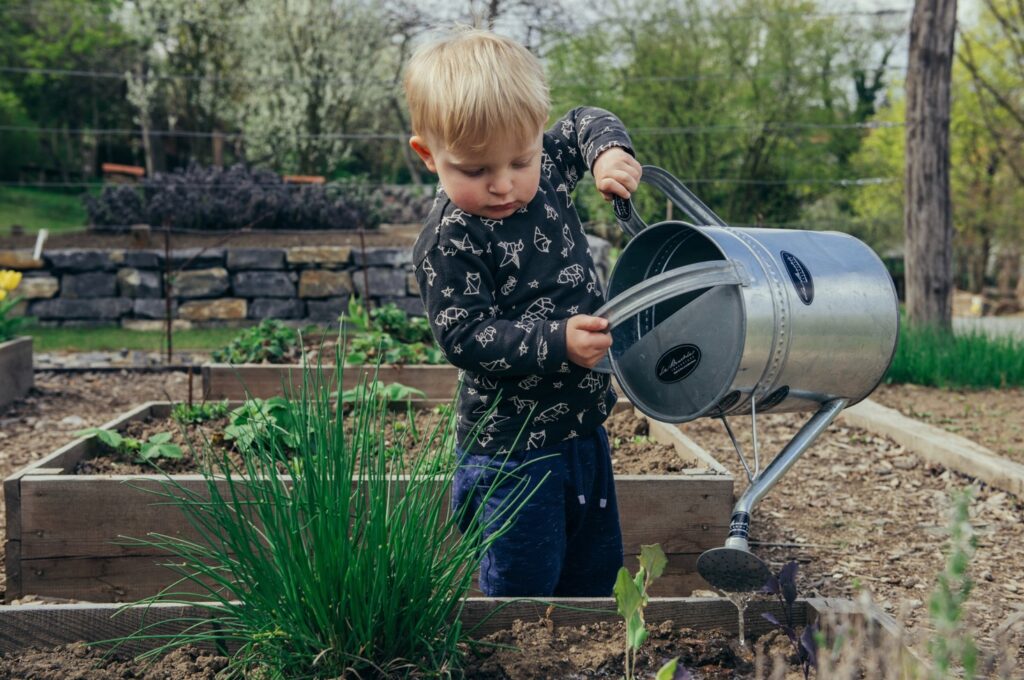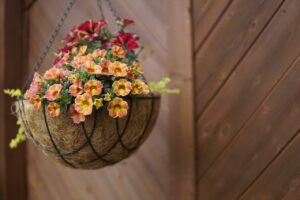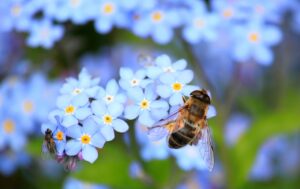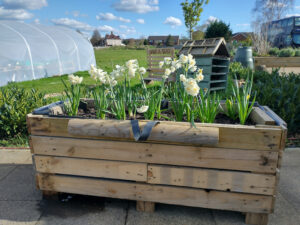
If you are reading this blog, then you may have asked yourself “how can I have a successful vegetable garden without having lots of spare time to dedicate to gardening?” well, the answer’s quite simple really; we recommend you begin by building a raised bed. Even in the first year, it’s one of the quickest ways to guarantee yourself a bumper crop just in time for the harvest. Creating a raised bed with top soil means that you can have the vegetable garden of your dreams that produces top-notch food, even if you don’t have a lot of time to spend on it.
However, when it comes to creating your raised bed from scratch, you need to use the right products that are of high-quality and proven to be effective when it comes to starting your gardening project, so you can use your limited time wisely, and see results fast.
So, if you wish to start creating your raised bed, you need to know what soil will be most suitable. That’s where we here at Earth Cycle like to step in; we want to make sure that our customers get exactly what they need for their garden to have the very best chance at success. We’re about to tell you everything you need to know about the topsoil and organic matter we think you’ll need for your next project, no matter the weather and whatever the season.

What Organic Matter Can I Add to My Topsoil?
1) Mushroom Compost
Mushrooms are initially produced and grown in natural materials such as gypsum, hay, corn cobs and so on. Many people seem to think that mushroom compost is actually made from the mushrooms themselves, but that just isn’t the case. The compost is just a byproduct of the ingredients that were used to cultivate the mushrooms to begin with, and it’s what’s leftover after they’ve been harvested that forms the base of the mushroom compost.
However, by the time it’s composted, packed, and marketed as mushroom compost, the texture is a lot more crumbly and light to the touch. This provides a variety of beneficial nutrients that help this type of compost do its job to the best of its ability, and it definitely won’t affect the pH of your soil because after all, it’s a neutral pH.
2) Leaves
One of our favourite additives to mix in well with your topsoil are some shredded leaves that are bordering on the crunchier side of life! They’re free (which is always a bonus) and tend to add a fair bit of bulk to your overall product. So, what we recommend you do is shred the leaves you’ve collected, and soak them through thoroughly.
The leaves rot entirely within a 6-12 month period, and after that, they are then ready to be absorbed into the soil. We recommend asking around your local area if you don’t happen to have enough leaves. We’re confident that your friends and neighbours will gladly cooperate with you, and provide you with some as well as any all-natural ingredients you might need from the outdoor world.
3) Pine Ground Bark
Despite the fact that pine bark is slightly acidic, it’s very rare that it has much (if any) impact on the overall pH of the soil in any garden. There are all sorts of ground fine composted bark to pick from, each comes with its own individual list of pros and cons, but pine is by far the most popular. For your future projects, make sure you utilise as much old bark as you can.
During the earliest stages of decomposition, freshly chipped wood will deplete the nutrients your soil has rather than benefit it in the long run. The carbon content of ground bark is high, and although it will decay with time, its gritty texture will let water and oxygen freely flow through your garden beds. Topsoil, compost, and a lot of the other organic materials we’ve mentioned have a similar texture, so it’s easy to pick and choose between them. Other options include manure, bagged compost alternatives and various other organic material mixes and that can be applied directly to the surface.
Many people find the difference between ground bark and mulch quite confusing, and we understand how that can be confusing. If you’re one of those people and would like to find out more about their distinguishing features, you should read our blog “Mulch 101: What is Mulch, and What is Mulch Used For?” to help you find the answers you’re looking for.

Earth Cycle’s Top 3 Soils for Raised Beds
1) Bed and Borders Topsoil
Our Beds and Borders Topsoil is a BS3882 Certified developed topsoil including 40% of our own PAS100 compost and quarried sand. It’s wonderful for creating new flower beds and garden borders, as well as topping up old ones, because it’s rich in a perfect blend of natural organic nutrients and it retains moisture well.
This Topsoil is a lovely blended dirt mixture that’s ideal for building and topping off both new and existing flower beds, raised beds and borders. It is a dark, fine, organic and rich loam that consists of plenty of great and useful nutrients. To remove lumps and stones, this soil has been screened to 10mm.
2) Organic Garden Topsoil
Our Earth Cycle Organic Garden Topsoil is great for a variety of garden uses since it contains a perfect combination of natural organic nutrients and humus, as well as the ability to hold and retain a lot of moisture. Our organic topsoil is a premium grade, and that will help give your garden the vitality it deserves. This soil can be used to pot vegetables, fill raised beds, or even create fresh lawns.
Our Organic Garden Topsoil is natural soil that’s rich in minerals and nutrients that release slowly over time. This high-quality topsoil, which has been enhanced with organic compost to improve structure and drainage, will provide your plants with a well-deserved nutrient boost and also help to promote robust, healthy development within your garden. Just make sure to keep on top of watering the environment you’ve created and avoid drowning the root area of your plants; you should see impressive results in no time.
3) BS3882 Multi-Purpose Topsoil
We recommend this topsoil to a lot of our customers, as it can be used for a whole variety of different purposes and projects. It provides excellent support for plant growth and is especially food for supporting produce growing in raised beds. It is suitable for the majority of garden and landscaping projects, but we think it really has an edge when it comes to planting in raised beds.
Our BS3882 Multi-Purpose Topsoil is sandy loam topsoil made with our PAS100 compost, which meets the BS 3882:2015 Topsoil specification. During droughts, our topsoil gently releases nutrients and oxygen, and it can drain surplus water while keeping enough moisture to help plants feel and look healthy.

The Best Soils for Raised Beds Conclusion
One of the biggest advantages of planting on a raised bed is that you have so much more control over the soil. That’s why knowing exactly what kind of soil you need is so important. Raised beds are especially beneficial for people who have soil troubles or pollution concerns on their land, as once again, you have control over what and how you grow. Great soil, as we’re sure you can understand is the foundation of a healthy garden, and we know that you’ll want to make sure your vegetables get the very best start they can.
If you have any questions regarding our wide range of soils or how to make your own raised bed from scratch, we’d be happy to help in any way we can. If you have any questions, please email us at [email protected]. Alternatively, please complete our contact form and we will respond as soon as possible.



